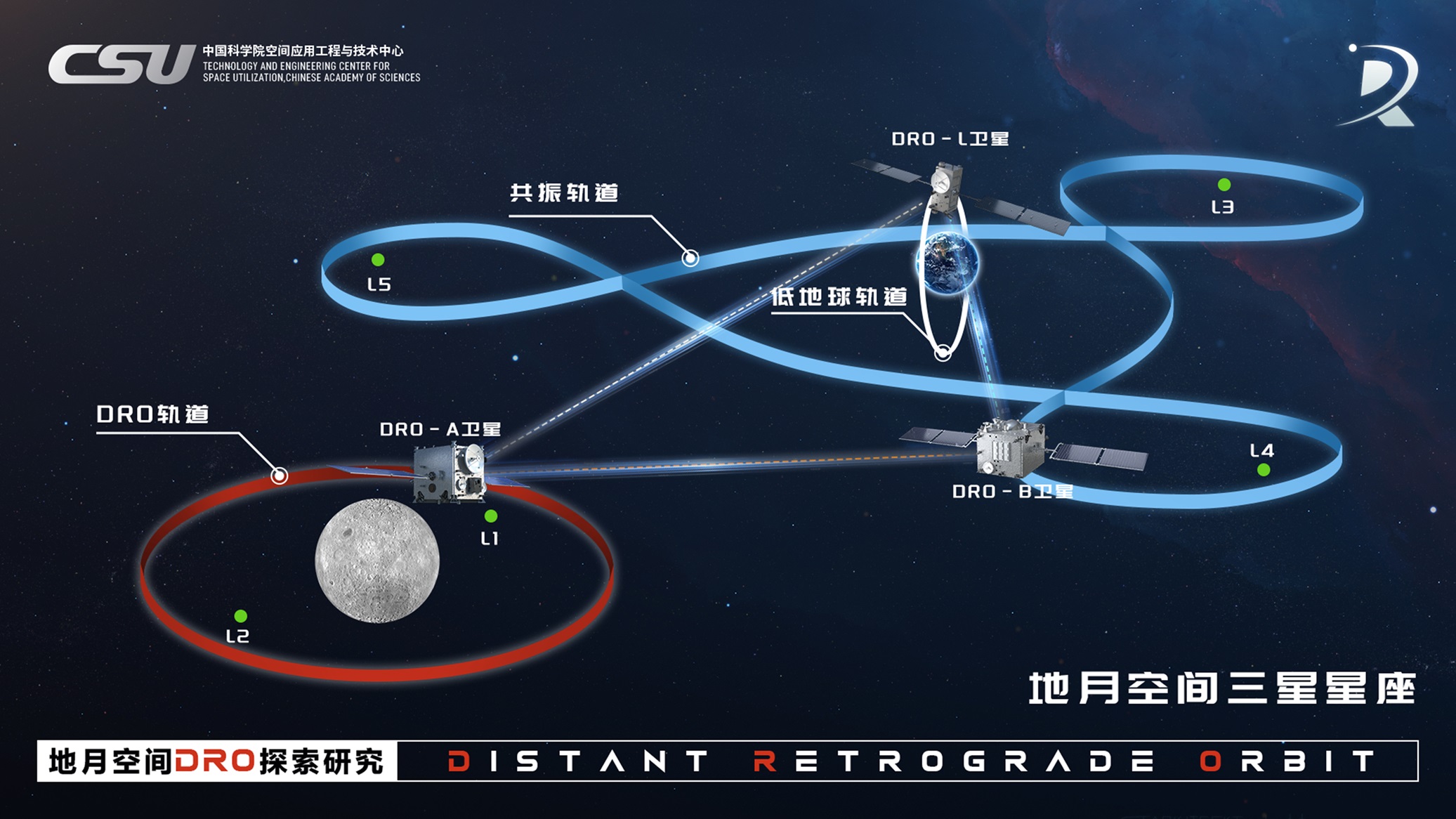

A demostration of the distant retrograde orbit. /CSU
China on Wednesday successfully conducted its first satellite laser ranging experiment at lunar-distance scales, marking a major technological breakthrough in deep-space exploration.
The breakthrough was announced on Friday by the Technology and Engineering Center for Space Utilization (CSU), Chinese Academy of Sciences (CAS), during a mission to explore the Distant Retrograde Orbit (DRO), an orbit known as a natural space harbor.
Using a 1.2-meter-aperture ground-based laser ranging system, scientists precisely measured the distance to the DRO-A satellite at approximately 350,000 kilometers, equivalent to the Earth-moon distance.
The DRO-A satellite, launched back in March 2024, didn't initially reach its orbit, but engineers at CSU managed to guide it to the right position after a 123-day rescue effort.
CSU's DRO mission has established a navigation system that enables auto-piloted satellites in the vast Earth-moon space, which is about 10,000 times larger than the traditional habitat of satellites – the Low Earth Orbit.
This achievement underscores China's growing expertise in space science and its ambitions for future lunar and deep-space missions, according to an announcement on the CAS website. (CGTN)

86-10-68597521 (day)
86-10-68597289 (night)

52 Sanlihe Rd., Xicheng District,
Beijing, China (100864)

